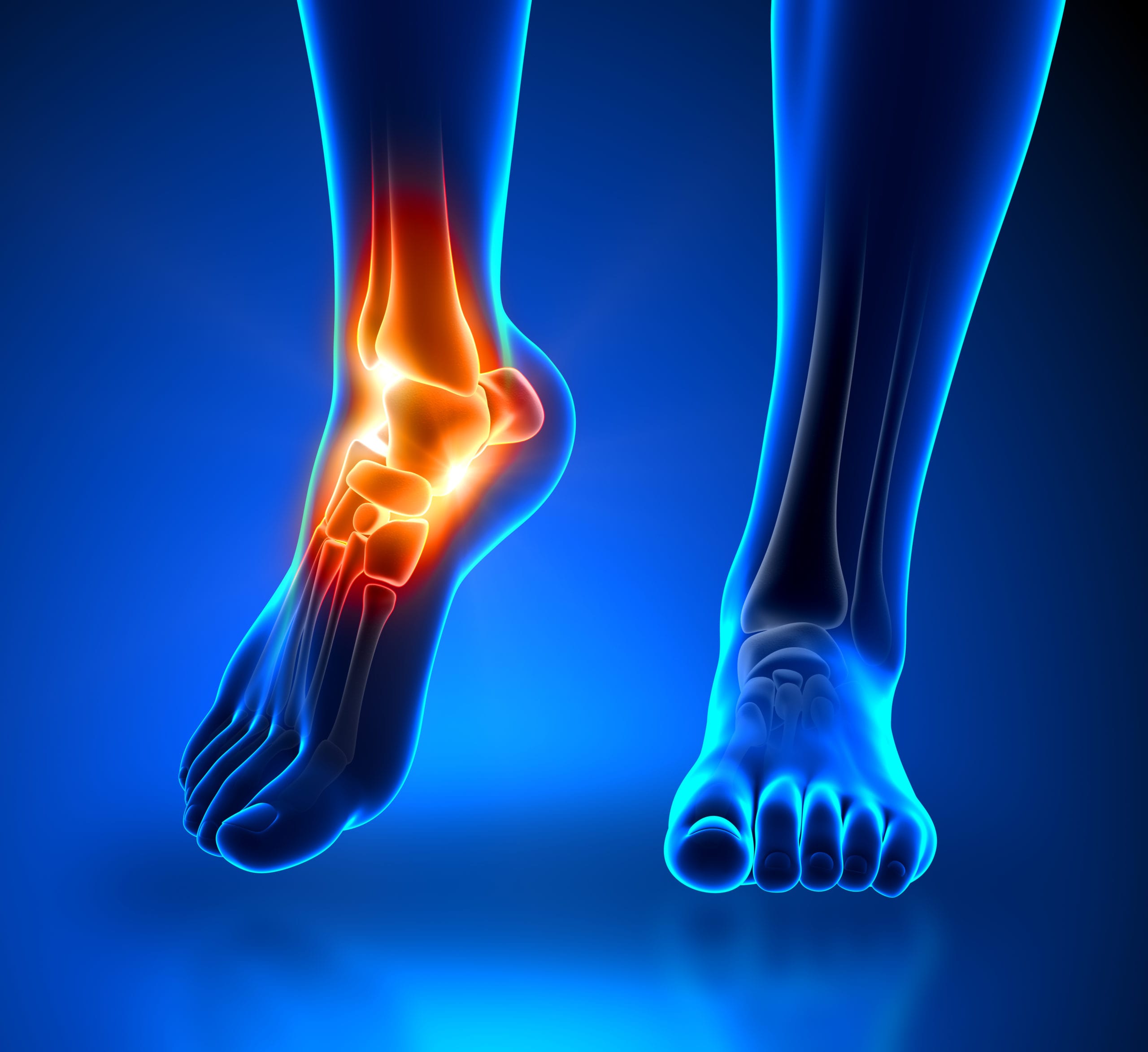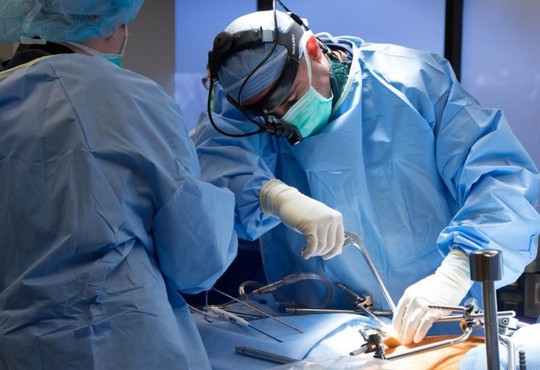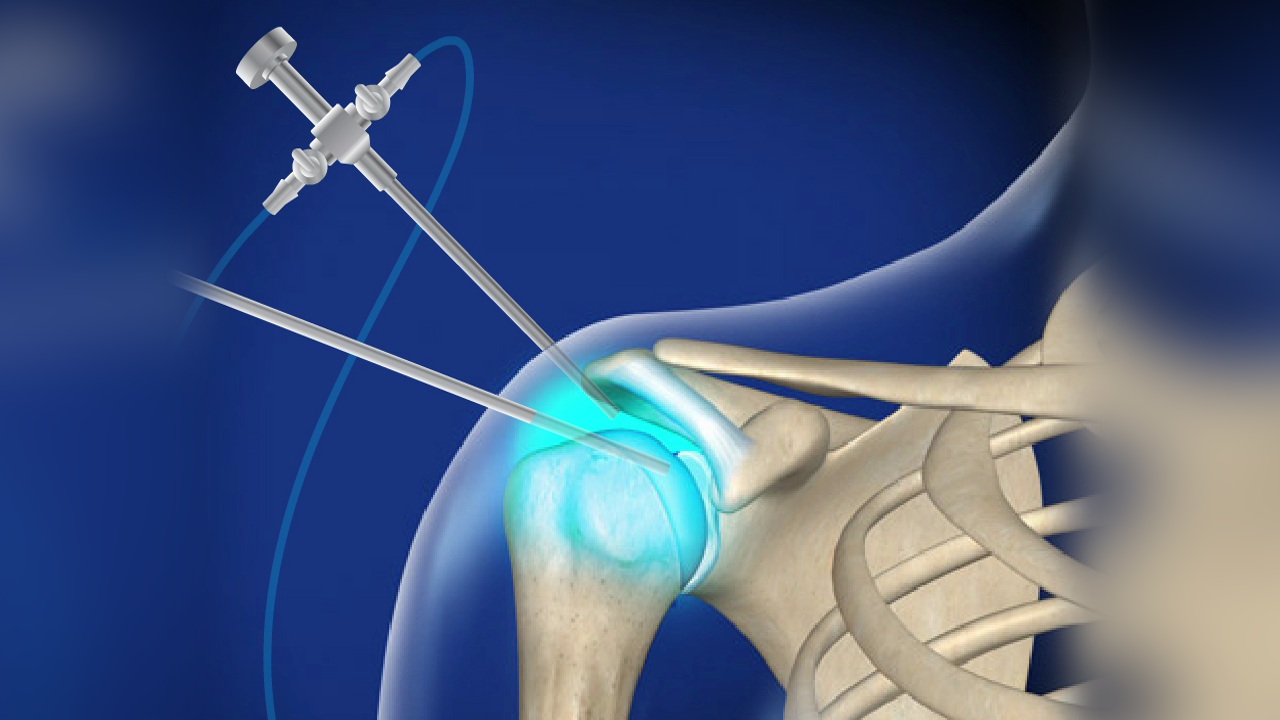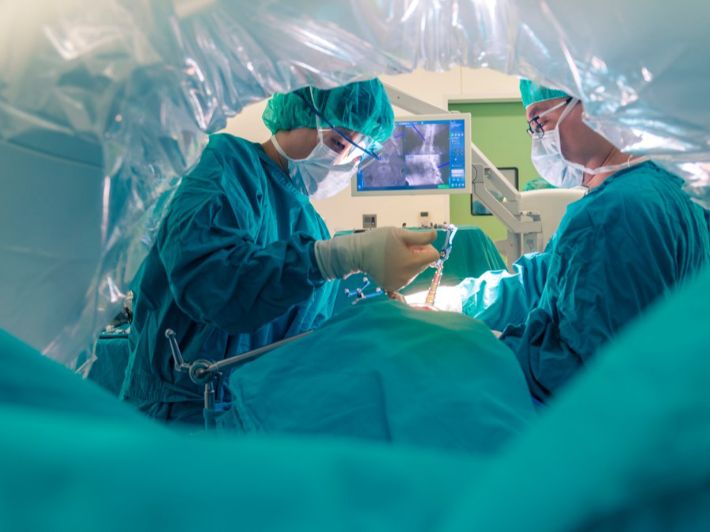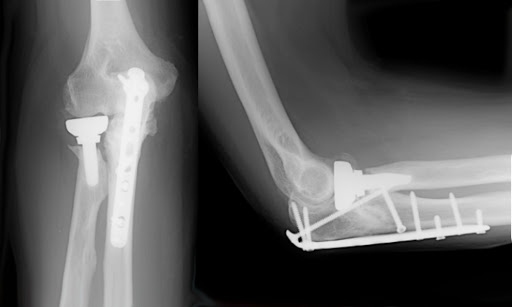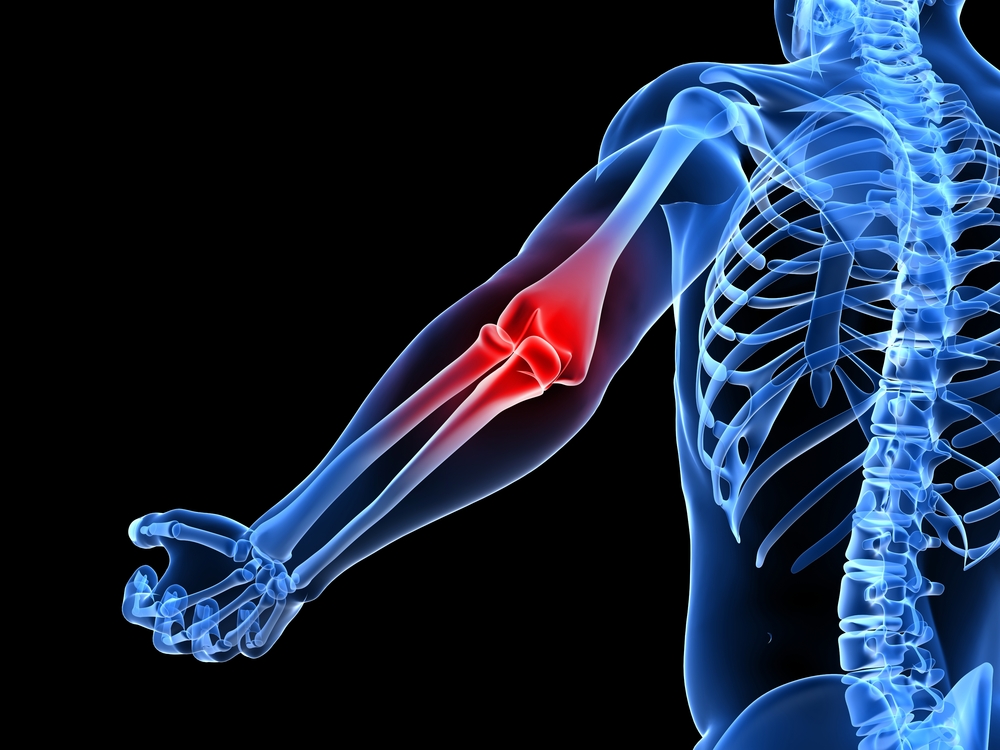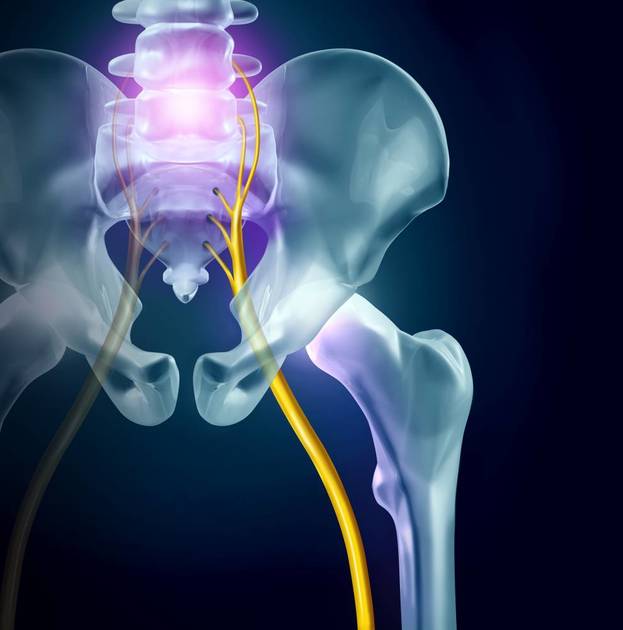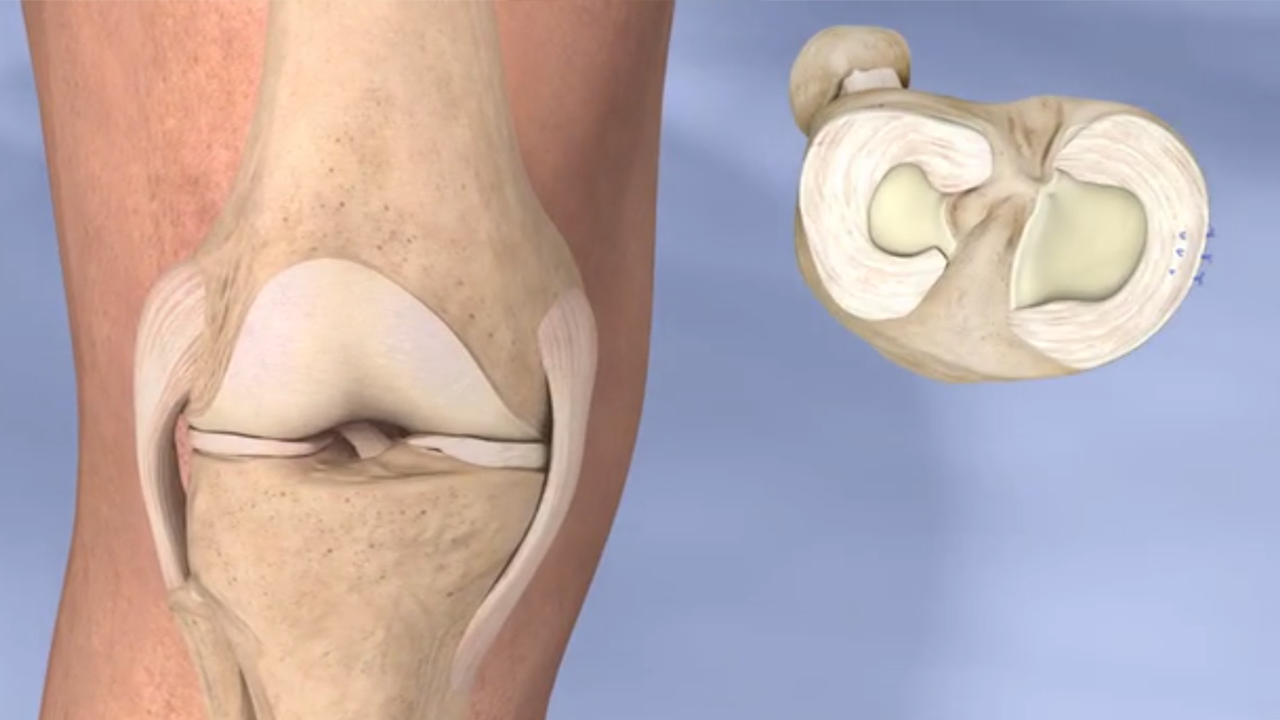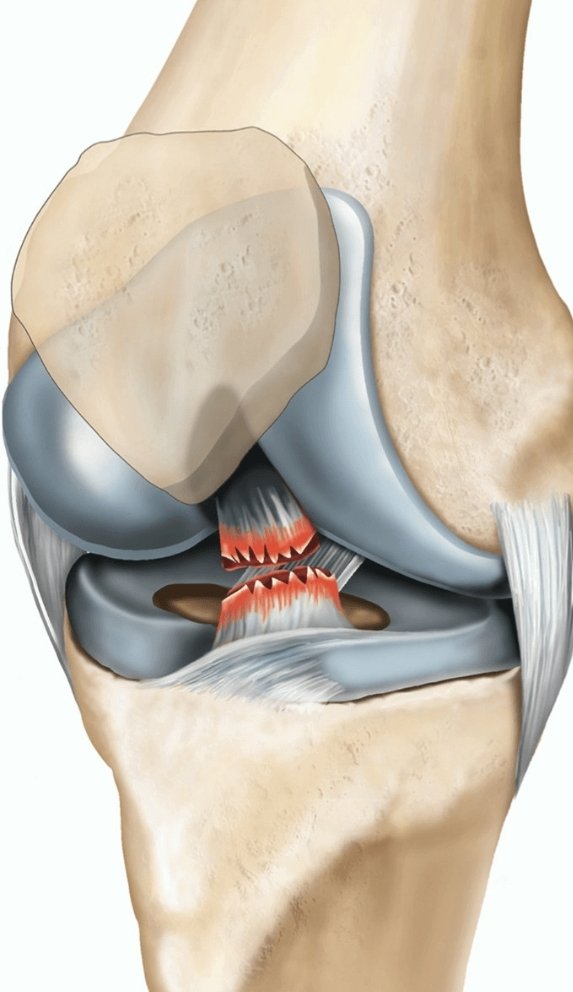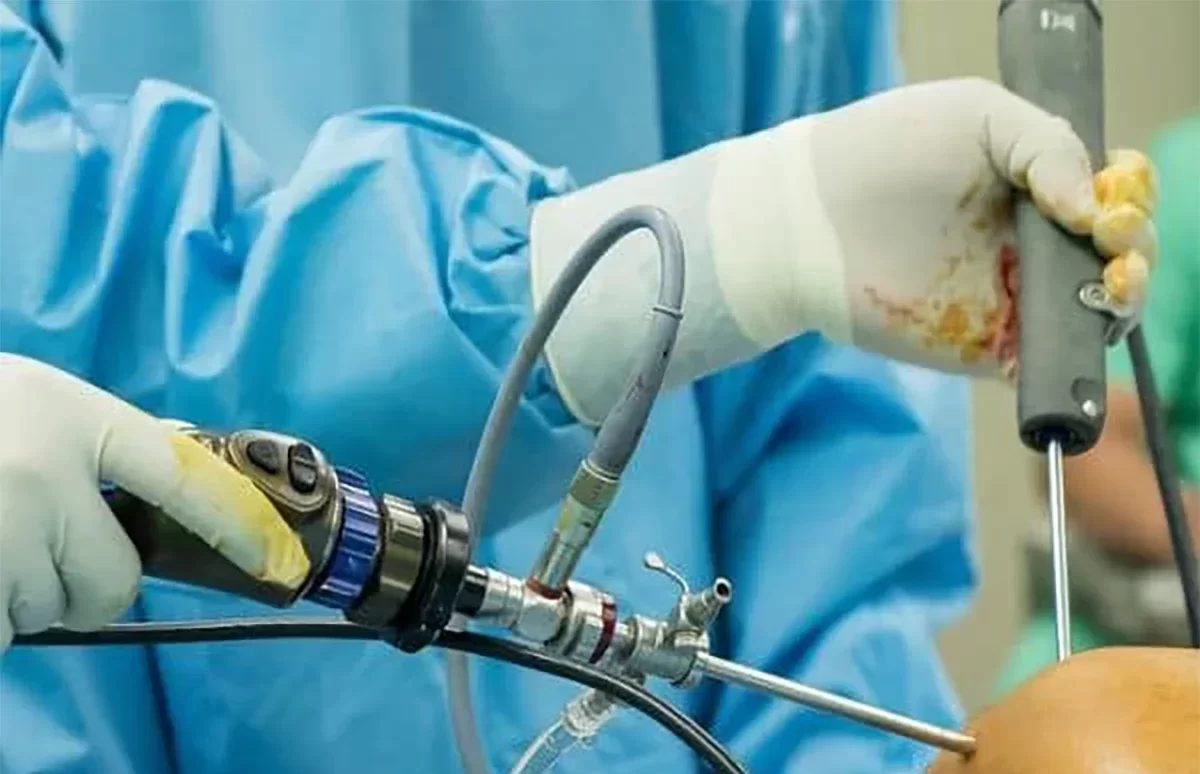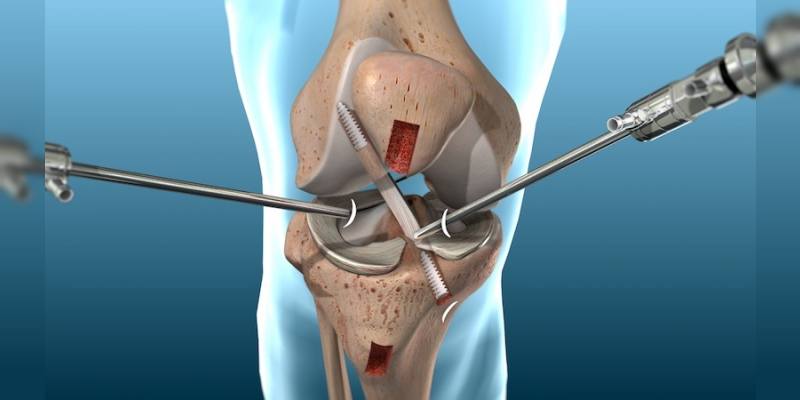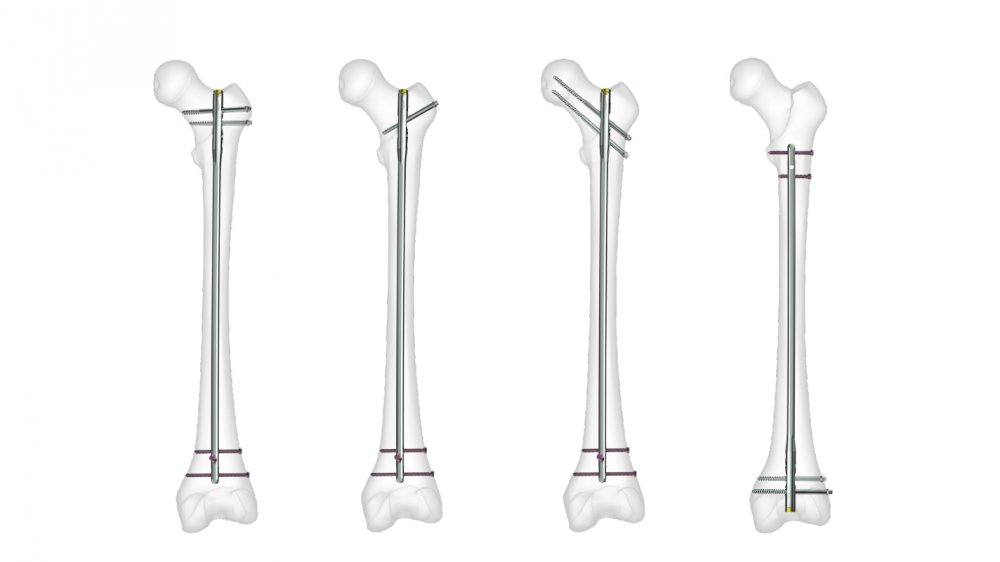Thermal Radiofrequency Procedure
Thermal Radiofrequency Procedure, In the medical field, there are numerous modern techniques, one of which is the thermal radiofrequency treatment. This is a new procedure that helps alleviate severe pain. It has many advantages and important information that one should be aware of, as well as the diseases that can be treated using this technique, as discussed in the following article.
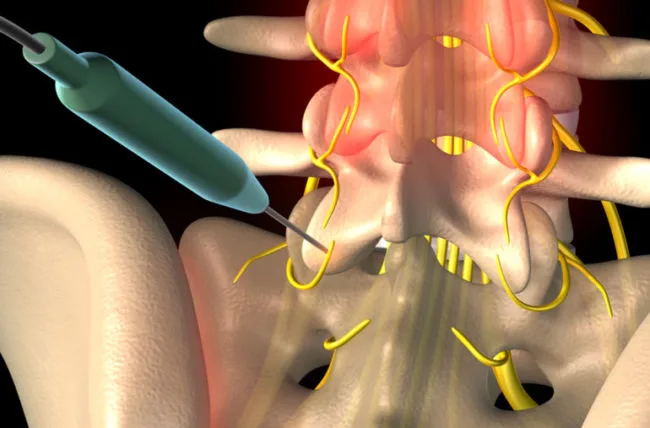
Thermal Radiofrequency Procedure
“Receive personalized service and excellent medical care with thermal radiofrequency treatment for disc herniation at Dr. Amr Amal’s clinics.”
The thermal radiofrequency procedure is a modern medical procedure that provides effective solutions for spinal, disc, and sciatica pain. It involves using a catheter that is inserted through a small hole in the affected area and directed using imaging to the damaged part of the nerve to relieve pain.
The procedure is performed under local anesthesia only, and the patient does not require general anesthesia. Primarily, it works to relieve existing nerve pain, which alleviates the patient’s discomfort in the affected area through nerve cauterization. The symptoms gradually disappear following the procedure.
Reasons for Using Thermal Radiofrequency
Doctors may recommend thermal radiofrequency treatment for several conditions, including:
- Treating trigeminal neuralgia.
- Reducing pain in the spine and joints, especially the knee.
- Treating peripheral nerve pain.
- Sometimes used to remove cancerous tumors.
- Treating disc herniation.
- Treating varicose veins in the legs.
- Alleviating pain caused by chronic headaches.
However, thermal radiofrequency procedures are not suitable for everyone, including pregnant women, people with blood disorders, and those with infections. Doctors advise these individuals to avoid exposure to radiation or interference waves due to their health conditions.
Types of Thermal Radiofrequency Procedures
Scientific advancements have contributed to the development of thermal radiofrequency techniques, which can be classified as follows:
- Conventional Thermal Radiofrequency Procedure: This procedure involves using a small needle to insert into the affected area and reach the damaged nerve, using specific thermal wave frequencies to stop the signals from the nerve to the brain, thereby relieving the patient’s pain.
- Pulsed Thermal Radiofrequency Procedure: This technique uses interventional radiology to target nerve roots through a magnetic field, treating them to prevent pain. Dr. Amr Amal, a consultant in orthopedic surgery and joints at Ain Shams University, has used this technique to treat liver tumors, disc herniation, trigeminal neuralgia, and more.
In summary, thermal radiofrequency is a modern medical procedure that offers an effective solution for various types of pain, particularly in the spinal area. It is important for patients to consult with healthcare professionals to determine the most suitable treatment option based on their individual health condition.
Advantages of Thermal Radiofrequency Procedure
The thermal radiofrequency technique is a relatively modern medical application that improves the condition of the affected nerve and reduces the transmission of pain signals to the brain, allowing the patient to return to normal activity. This technique has numerous important advantages, including:
- A safe technique that does not damage tissues.
- Rapid patient recovery and return to normal activity.
- It does not cause post-surgical complications compared to other procedures.
- Its cost is lower than other surgical procedures.
- It does not affect the nerves surrounding the affected nerve.
- The ability to precisely treat the affected area.
- The procedure is short, taking only 30 to 45 minutes.
Disadvantages of Thermal Radiofrequency Technique
Generally, patients do not experience complications after the thermal radiofrequency procedure; however, if risks occur, they are related to pain caused by needle insertion at the injury site, muscle spasms near the nerve, or mild inflammations, all of which quickly subside shortly after the procedure. More details will be provided in the following paragraphs.
What Diseases Does Thermal Radiofrequency Treat?
- Treating neck pain.
- Treating back pain.
- Using thermal radiofrequency for spinal stenosis.
- Treating lumbar and cervical disc herniation pain.
- Pain from internal disc herniation causing lower back pain, treated on the outer layer of the disc.
- Treating knee joint roughness.
- Treating pain of the fifth and ninth nerves.
- Pain in the shoulder and arms.
- Thermal radiofrequency is used to treat sphenopalatine ganglion pain in cases of migraines.
- Treating pain of the sympathetic nerve in the arms, chest, or feet.
- Hip joint pain.
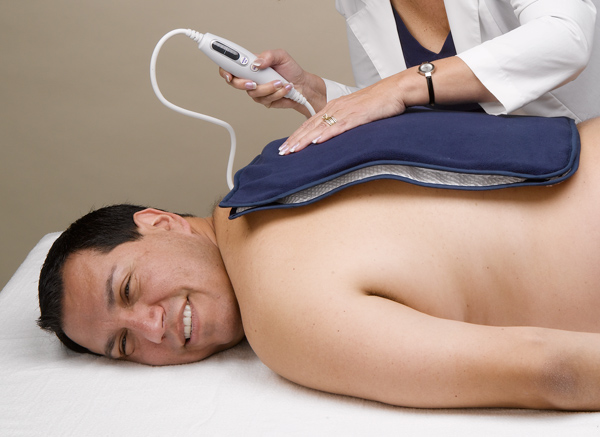
Thermal Radiofrequency Procedure for the Spine
“Trust in the high expertise and excellent results of Dr. Amr Amal in treating disc herniation with thermal radiofrequency, and regain your back health and quality of life.”
The spine, specifically disc herniation in the back vertebrae, can be treated using thermal radiofrequency. This technique works by cauterizing the nerve roots that have been subjected to pressure after the disc herniation, resulting in improved condition and pain relief over time.
Why is Radiofrequency Ablation Used for Treating the Spine and Joints?
Radiofrequency ablation is one of the most commonly used techniques for treating the spine and joints. It treats both peripheral and central nerves through two methods: regular radiofrequency and pulsed radiofrequency. This technique is very safe, highly successful, and extremely effective.
- Safe use of radiofrequency to access joints affected by roughness or inflammation.
- Safely works on all the body’s nerves, both sensory and motor, without affecting them.
- Introduction of radiofrequency application to peripheral nerves.
- Safe operation on nerve roots in case of a herniated disc.
- Rare occurrence of any motor effect on the nerve being treated, meaning the nerve retains the same level of sensation and movement, only changing the nature of pain transmission from the nerve.
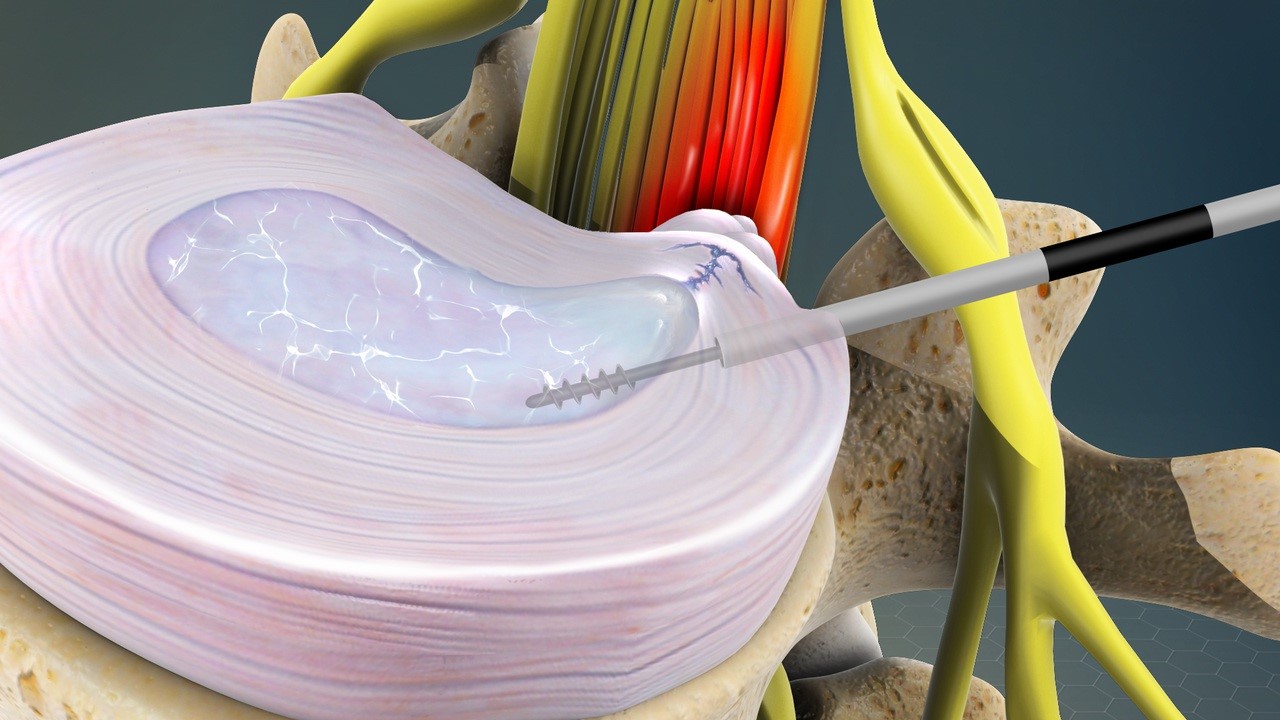
Radiofrequency Ablation for the Knee
There are some patients who cannot undergo knee surgery, and non-surgical treatment is ineffective. In these cases, it is necessary to undergo radiofrequency ablation, which helps alleviate pain, allowing the patient to return to normal activity. Radiofrequency can be used to treat knee roughness and joint injuries. For more details about treating knee roughness using radiofrequency, click here.
Radiofrequency Ablation for Discs
Radiofrequency has recently been used to treat herniated discs and other diseases due to its safe method that improves the patient’s condition and alleviates pain. The radiofrequency waves work to improve the patient’s condition and relieve pain.
Cartilage injuries include herniated discs, which are common in spinal discs. There are several ways to treat them, including radiofrequency, which is a pulsed wave that works to reduce or stop the activity of the affected nerve, helping the patient get rid of pain.
Radiofrequency ablation for the spine is not just for one type of injury; it can be used to treat herniated discs, sciatica, and other pains that affect the vertebrae and impact the spinal cord nerves, causing severe pain to the patient.
The disc radiofrequency ablation procedure can be done through:
- The treating doctor begins by using radiological devices to precisely identify the irritated nerve causing pain.
- Specific waves from the radiofrequency device are directed to the damaged nerve for ablation.
- The nerve stops sending pain signals without causing damage to any adjacent parts.
- The patient does not need to be awakened as the doctor uses local anesthesia, and the patient can leave the operating room shortly after, within 20 to 45 minutes.
The results of the disc radiofrequency ablation procedure become apparent shortly after the procedure, and the patient experiences significantly less pain than before. The individual must continue to follow up with the specialist to determine the success of the procedure and avoid any complications.
Is Thermal Frequency a Final Treatment for Cartilage?
The effect of thermal frequency treatment can last for more than six months to a year after the procedure. This depends on the location of the injury and the patient’s adherence to the instructions provided by the doctor after the procedure. In many cases, the nerve pain does not return to the patient again. So, the answer to this question is yes.
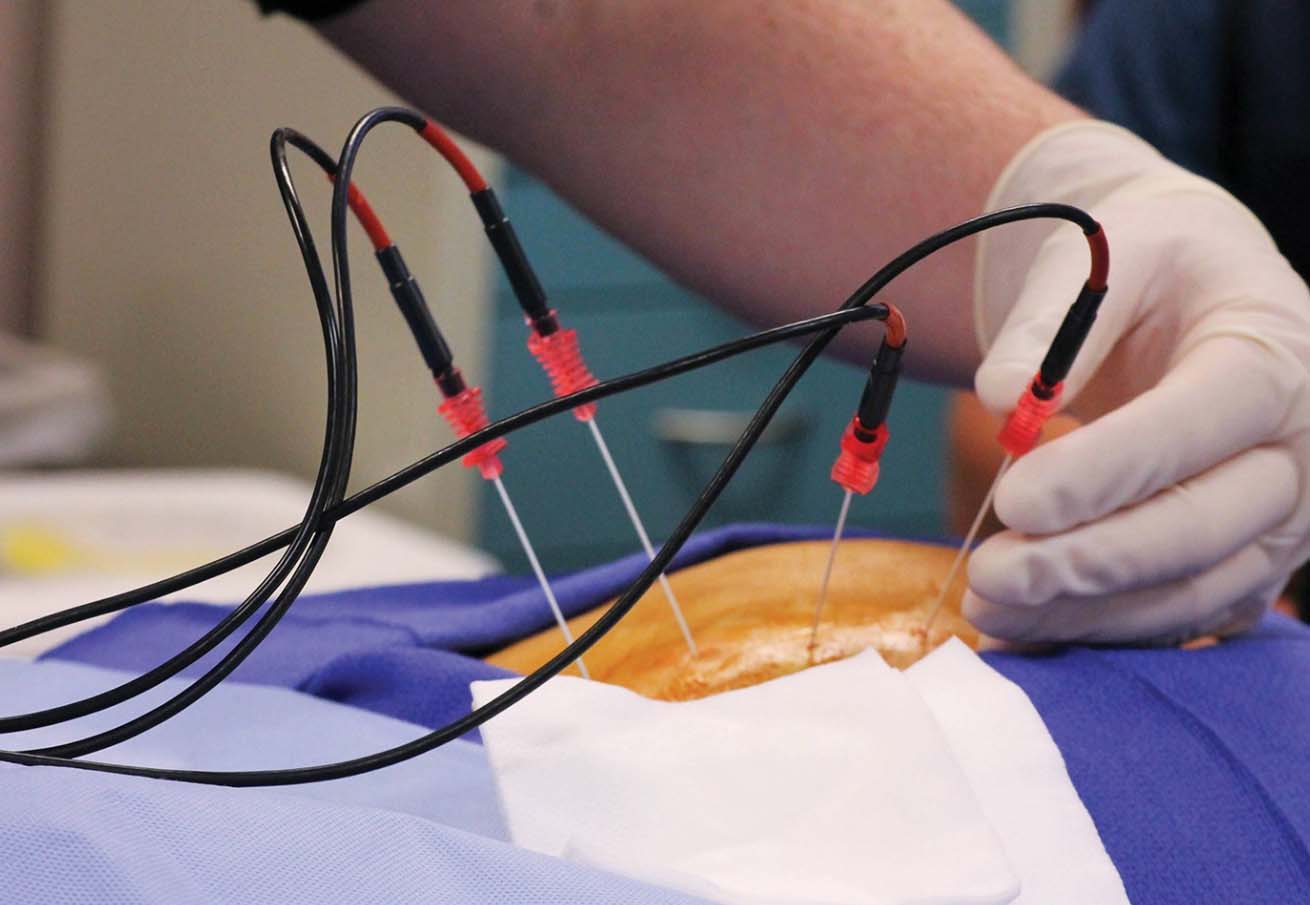
Is Thermal Frequency Treatment for Joint Pain Safe?
Thermal frequency treatment for joint pain is considered safe for most people. However, it may entail some risks, such as an increased chance of infection and bleeding, as well as the occurrence of bruising around the injection site and discomfort.
Thermal Frequency Procedure for the Fifth Nerve
The fifth nerve, or the trigeminal nerve, can experience bouts of pain affecting the facial area. Currently, pain from the fifth nerve can be treated using thermal frequency technology, which works to soothe the severe irritation and pain caused by the nerve. Since it is one of the interventional radiology procedures, it does not cause side effects or tissue damage.
Thermal Frequency for Tumor Treatment
Thermal frequency procedures have various advantages, including contributing to the treatment of liver tumors, thyroid glands, uterus, and others. However, these tumors must be benign, not malignant. The size of the tumor gradually decreases using thermal frequency, and more than two-thirds of the tumor size can be eliminated within 6 months of using the technique.
Instructions Before the Thermal Frequency Procedure
There are some recommendations that the doctor will inform you about before completing the thermal frequency procedure, which includes:
- Adhering to prescribed medications if you have chronic diseases such as diabetes and high blood pressure, and adjusting insulin doses.
- Discontinuing blood-thinning medications, including aspirin.
- Fasting for six hours before the procedure.
- Refraining from drinking fluids two hours prior to the procedure.
Thermal Frequency Procedure Steps
The thermal frequency procedure is carried out through a small incision in the affected part, allowing the doctor to insert a small catheter to connect to the thermal frequency device, which delivers electromagnetic waves to the damaged nerve to reduce the pain it causes.
The steps followed by the doctor in performing the thermal frequency procedure for the patient include:
- Using local anesthesia as a first step to perform the procedure.
- Using a device that works with interventional radiology to accurately locate the damaged nerve using electrical waves directed towards the affected part.
- In some cases where the interventional radiology device is not effective, some dyes can replace the device to reach the damaged nerve.
- Directing the thermal frequency device and electromagnetic waves directly onto the nerve to stop its function and reduce pain signal transmission, resulting in patient improvement.
- The procedure duration does not exceed 45 minutes, and the patient can leave the hospital on the same day.
Post-Thermal Frequency Instructions
It is important for the patient to undergo proper diagnosis before the thermal frequency procedure and to discuss the post-procedure steps with the treating doctor. Dr. Amr Amal, an orthopedic and joint surgery consultant at Ain Shams University, recommends the following after the thermal frequency procedure:
- Using prescribed pain relievers until the pain from the thermal frequency needle entry subsides.
- Applying cold compresses to the affected area in case of swelling.
- Avoiding strenuous effort for two days after surgery and resuming normal activity afterward.
- Refraining from driving for about a day post-surgery.
Success Rate of Radiofrequency Ablation
“Book an appointment now and rest assured with Dr. Amr Amal’s expertise in using radiofrequency ablation to relieve pain.”
Radiofrequency ablation has proven to be highly effective in treating a variety of diseases including disc herniations, trigeminal neuralgia, knee injuries, and tumors as well. The success rate of this type of procedure has reached 90%, and patients can return to normal activity just a few days after undergoing the procedure.
What is the Recovery Time for Joint Pain Treatment with Radiofrequency Ablation?
After the patient completes radiofrequency ablation treatment, they should have someone to take them home as they will be prohibited from driving or operating any machinery for at least 24 hours. The patient can also return to their normal diet immediately after the procedure, but they should avoid strenuous and challenging activities for several days.
Risks of Radiofrequency Ablation
One of the important advantages of radiofrequency ablation is its safety, as it does not affect the surrounding tissues or cause damage to nearby organs, and complications are rare. However, in some rare cases, patients may experience adverse effects including:
- Burns resulting from the use of radiofrequency.
- Inflammation at the site of treatment.
- Bleeding at the treatment site.
- Muscle spasms near the treatment site or numbness in the leg due to local anesthesia.
- Discomfort in the treatment area.
- Possible swelling, bruising, and mild pain at the injection site.
Patients can avoid the risks and complications associated with radiofrequency ablation through continuous follow-up with the treating physician, especially if the pain intensifies after the procedure. However, the effects of the procedure typically subside within days of its completion.
Radiofrequency Ablation Failure
The radiofrequency ablation technique has achieved great success worldwide and is indeed one of the procedures recommended by Dr. Amr Amal and his distinguished medical team for treating various diseases, including knee treatment, certain types of tumors, and cartilage issues. However, sometimes radiofrequency ablation procedures fail, which can be attributed to improper diagnosis of the patient or relying solely on clinical examination without using imaging techniques.
In the event of a radiofrequency ablation failure, the patient’s pain returns, and their condition does not improve. Therefore, it is crucial to choose an experienced doctor in this type of procedure to avoid failure and to ensure adherence to instructions before and after the operation.
Cost of Radiofrequency Ablation
The cost of radiofrequency ablation depends on several factors that can affect the cost of the surgical procedure, such as the severity and location of the injury, and the place where the surgery is performed. However, in general, it is considered less expensive than other, more modern medical procedures and is highly recommended by many orthopedic doctors.
Is Radiofrequency Ablation a Treatment or a Pain Reliever?
The answer is: Treatment. The fundamental idea behind radiofrequency ablation is to relieve pain resulting from nerve injury or irritation in the affected area. This is achieved by using thermal frequencies to cauterize the nerve without affecting the surrounding tissues. This makes the pain gradually disappear, allowing the patient to start feeling better, with improvement continuing for about a year. In most cases, the patient does not need to undergo the procedure again.
Dr. Amr Amal: A Leading Doctor in Performing Radiofrequency Ablation
Dr. Amr Amal is considered one of the best doctors specializing in the use of radiofrequency ablation for treating various orthopedic problems, such as disc herniation and sciatica, aiming to relieve the patient’s pain. Dr. Amr relies on following the best modern techniques and methods to help patients solve their problems. He enjoys a good reputation among his patients for his distinctive approach in dealing with them, his patience in listening to their complaints, and his commitment to providing outstanding medical care until their full recovery is achieved.


